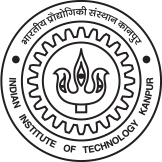
Prerequisites: CHM402 for M. Sc. students
3-0-0-9
Course Contents
Pericyclic Reactions:
Conservation of orbital symmetry, and Woodward and Hoffmann rules. Cycloadditions, Electrocyclizations, Sigmatropic rearrangements, and Chelotropic reactions. Orbital overlap effects in chemical processes.
Stereoelectronic Effects in Organic Chemistry:
Acetals, Esters, Amides and related functions. Reactions at sp3, sp2, and sp carbons. Examples in synthesis and biological processes. Felkin-Ahn model, Houk model, Cieplak model, EFOE model, and Cation-complexation model as applied to -Facial selectivity.
Reactive Intermediates:
Carbonium ions, carbanions, and radicals (formation, rearrangement, and further reactions in reference to Baldwin’ rules for ring-closure)
Chemical Equilibria and Chemical Reactivity:
Correlation of reactivity with structure, Hammett equation, substituent constants and reaction constants
Chemical Kinetics and Isotope Effects:
Various types of catalysis and isotope effects. Importance in the elucidation of organic reaction mechanisms.
Electron-Transfer Reactions:
Theoretical basis, Examples of photo-induced and chemically-induced electron transfer reactions (PET and CET).
Organic Photochemistry:
Energy and electronic spin states, Spectroscopic transitions, photophysical processes, fluorescence and phosphorescence, energy transfer and electron transfer, and properties of excited states, Representative photochemical reactions of carbonyl compounds, olefins, and aromatic compounds.
Miscellaneous:
A(1,2) and A(1,3) strain, Captodative effect, Hammond’s postulate, Curtin-Hammett principle, and thermodynamic and kinetic control of reactions.
Topics
Current Course Information
Instructor(s):
Number of sections:
Tutors for each section:
Schedule for Lectures:
Schedule for Tutorial:
Schedule for Labs:
Books and References
Isaacs, N. S., Physical Organic Chemistry.
Lowry and Richardson, Mechanism and Theory in Organic Chemistry.
Deslongchamps, P., Stereolectronic Effects in Organic Chemistry.



